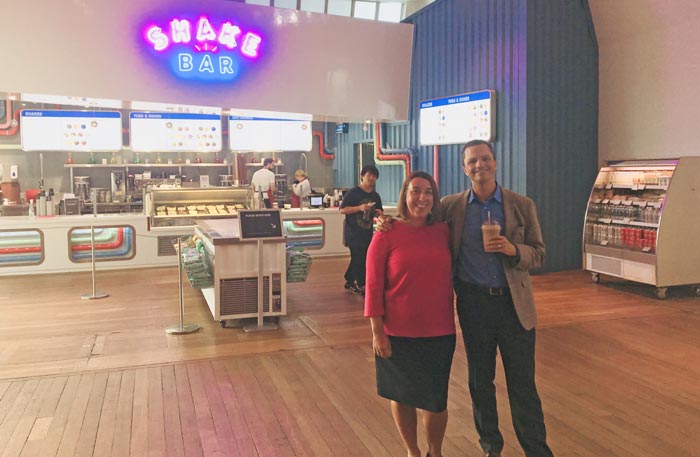Arts and Culture
Museums
Article
The Culturephiles
9d736591-9cdb-4fbb-9c0e-c2f29f40c7c4
3 min
https://edge.sitecorecloud.io/tessituraneab9a-tessiturane5642-staging-5396/media/Images/Discover-Images/Andrew-Blog/Science-Museum/Science-Museum-facade-credit-Science-Museum-768x465.jpg?h=465&iar=0&w=768
How a clever museum exec looked up from the numbers and saw the story of the solution.
Superpowers of Observation

President & CEO, Tessitura
Superpowers of Observation
1/14/2019
3 min
One small corner of an otherwise grand museum was rather forlorn, and Michelle was bothered by it.
The Museum: The Science Museum in London
Michelle: The Science Museum’s Commercial Director, Michelle Lockhart
The Forlorn Spot: The first floor coffee stand and small gift shop at the Museum
And why was Michelle bothered? Because this was prime real estate. Nearly every visitor in the museum walked past it. And that was the problem. They walked past it.
From a revenue standpoint, the numbers for the coffee stand and shop were abysmal. Michelle was the Commercial Director: her job was to build revenue to support the greater mission of the museum. And this forlorn spot was clearly a missed opportunity. It gnawed at her.
Michelle is a data hound, so she ran plenty of numbers, analyzed trends, looked at spend per visitor and much else. The data told her a lot, but ultimately she realized she needed to pull her nose out of the numbers and gather information in a different way.
Data and analytics are a crucial part of problem solving, but sometimes you need to take the time to learn the story of the problem.
So Michelle went to the Forlorn Spot and stood there and watched. She watched the people go by. She watched where they came from and where they went next. She watched who did stop in (not many), and she watched who did not stop in (most). See saw the urgency of the kids dragging their weary parents to the next room of wonders. She went at different times of day, different days of the week, sunny days and rainy ones.
Data and analytics are a crucial part of problem solving, but sometimes you need to take the time to learn the story of the problem.
And over time she came to understand the Story of the Forlorn Spot.
The Forlorn Spot stood at a crossroads in the museum. To one side of it, streams of parents and children would spill out of the elevators into a large utilitarian space filled with long tables for eating their packed lunches from home. On the other side of it was the entry point to museum exhibits.
Michelle saw that the flow was consistent:
- Arrive at the museum with your family and picnics
- Eat your sandwiches in the happy din of hundreds of other families
- <Pass by the Forlorn Spot on your way to the exhibits>
- Hit the exhibits
The Forlorn Spot was forlorn for a good reason. It made no sense in the midst of that tumult to stop for a coffee or buy a t-shirt.
So what would make sense at this crossroads? Working with colleagues and partners, they brainstormed idea after idea. They visited other museums. They crunched more numbers. They saw that they needed to imagine a new happy ending for the Story of the Forlorn Spot.
And so Michelle replayed the story again. Families arrive, with parents already exhausted from the travel on the Tube. They eat their picnic lunches, clean up the crumbs, pack up their bags, and make a beeline for the exhibits. What would be the most irresistible thing to find right at that moment of crossroads?
They needed something that made sense right after lunch. Something that was loved by adults and children alike. Something fast. Something not too expensive. Something fun.
What they came up with was ridiculously simple. A Milkshake Bar. Post-lunch, pre-exhibit, fast to deliver and doesn’t break the bank. And complete with lids so they can be enjoyed in the exhibits.
And all of it utterly, whimsically, unexpected. It would be the only Museum Shake Bar in London.

Here I am with Michelle, enjoying one of her famous shakes.
And so, dear readers, they did it. And The Forlorn Spot was transformed into the second most profitable, per square foot, piece of catering real estate in the entire museum. And just as important, they created a fun surprise for all ages.
If you are trying to solve a problem about audiences, visitors or spaces, by all means crunch the numbers. But don't forget to look up from your screen from time to time.
Be like Michelle. Find the Story of the Problem. Imagine the story ending happily. You may be surprised at what you learn.
Top photo courtesy of the Science Museum, London.
Topics
Arts & Culture
/Museums
